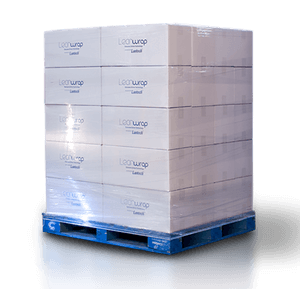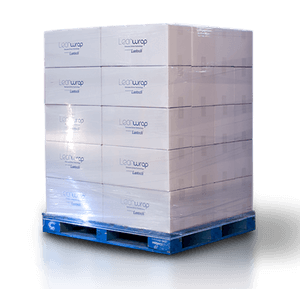The biggest cost driver in stretch wrapping is in-transit damage incurred by loads that were stretch wrapped ineffectively. One of the best ways to stretch wrap well is with a stretch wrapping machine. In fact, we’ve talked about some of the problems with hand wrapping pallets before, and often the biggest issue with hand wrapping is that machines are just better at wrapping loads than people are.
However, as much as machines are capable, they’re not as smart as you. They can’t decide:
 Whether your favorite film will work.
Whether your favorite film will work.
More than likely, film used for hand wrapping won’t work as well on a machine. You’ve got to consider the gauge, pre-stretch, and material of the film. Talk with a distributor in your area, who knows as much about machines as he does film.
How tight to wrap your load.
The top, middle, and bottom layers of your load need to all have the correct amount of containment force, which is the film tension multiplied by the number of film layers. Containment force is what holds the load together. The right amount of containment force depends on the type of load you’re wrapping. Is your load heavy, light, or unstable? Heavy loads may require more containment force and light loads may require less.
What the wrap pattern should be.
The way the load is wrapped depends on your stretch wrapper’s settings. You need to choose the number of top and bottom wrap counts. You must also decide the wrap force settings and how much overwrap you want applied on top of the load as well film delivery system’s speed and the rotation speed of the turn table or wrap arm.
Why the film just broke.
Film breaks are more than just an annoyance. They’re the No. 1 problem in stretch wrapping. Often, they lead to a chain of disastrous consequences. Film breaks are, indeed, the enemy. To limit your risk for breaks, there are a few things you can do:
- Keep your products from overhanging the pallet and try to eliminate sharp corners.
- Train operators to properly handle film. Improper film threading is a main cause of film breaks. Film breaks can occur when the film roll experiences nicks. These nicks happen when the film roll has been dropped or mishandled.
- Don’t set the wrap force too high. Depending on your film and product, adjust the tension of the film to determine the best setting.
If the load needs special attention or reinforcement at some spot.
You may need to secure partial layers with the roping technique or you may need to band – apply multiple layers of film to one spot on the load.
Stretch Wrapping Machines Giving The Best of Both Worlds
Stretch wrapping machines have the potential to greatly increase a pallet load’s chances of arriving in as made condition. They simply do a better job than people at consistently wrapping loads to wrap standards. However, human beings do have a place in the stretch wrapping process. With a bit of research and practice people can work with their stretch wrapping machines to make sure their loads have the best chance of reaching their destination in as made condition.
Make sure the machine you buy will get the job done. A good rule of thumb is always not to guess, but to test. Get help if you’re not sure.
You may be interested in these related posts:
- How much does stretch wrap stretch? Is more better?
- Film Cable vs. Film Rope – Load Securing with a Stretch Wrapper
This post was published on February 14, 2017 and updated on November 22, 2019.
February 14, 2017

